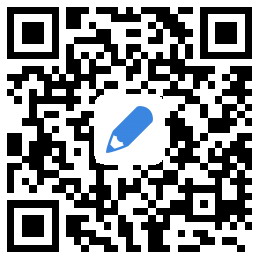Betty Friedan
一位作家,一位女權主義者,一位斗士
Betty Friedan
Betty Friedan (February 4, 1921 - February 4, 2006) was an American writer, activist and feminist.
A leading figure in the "second wave" of the
In 1970, after stepping down as now's first president in 1969, Friedan organized the nation-wide women's strike for equality on August 26, the 50th anniversary of the nineteenth amendment to the
Friedan joined other leading feminists (including Gloria Steinem, Shirley Chisholm, Fannie Lou Hammer, Bella Abzug, and myrtle eves Williams) in founding the national women's political caucus in 1971. In 1977 she joined some of the movement's most visible and influential leaders, and 20,000 other women, at the international women's year federally-funded convention, the national women's conference, a legislative conference which sent a report to president Jimmy Carter, the United States congress, and all the states on how to achieve equality.
Friedan was a strong proponent of the repeal of abortion laws, founding the national association for the repeal of abortion laws, which after abortion was legalized in 1973, became the national abortion rights action league. She was also a strong supporter of the equal rights amendment to the constitution and of many women's laws.
Though somewhat eclipsed by Gloria Steinem as America’s preeminent feminist, Friedan continued to be an influential author and intellectual and remained active in politics and advocacy for the rest of her life, authoring six books. One of her later books, the second stage, critiqued what Friedan saw as the extremist excesses of some feminists who could be broadly classified as gender feminists.
Writing career:
Before 1963
After leaving
Friedan was dismissed from the union newspaper UE news in 1952, because she was pregnant with her second child. After leaving UE news, she became a freelance writer, and wrote for various magazines, including cosmopolitan.
The feminine mystique
Main article: the feminine mystique
For her 15th college reunion in 1957, Friedan conducted a survey of college graduates, focusing on their education, their subsequent experiences and satisfaction with their current lives. She started publishing articles about what she called "the problem with no name," and got passionate responses from many housewives grateful that they were not alone in experiencing this problem.
Friedan then decided to rework and expand this topic into a book, the feminine mystique. Published in 1963, it depicted the roles of women in industrial societies, especially the full-time homemaker role, which Friedan deemed stifling. Friedan speaks of her own 'terror' at being alone, and observes in her life never once seeing a positive female role-model who worked and also kept a family. She provides numerous accounts of housewives who feel similarly trapped. With her psychology background, Friedan offers a critique of Freud's penis envy theory, noting a lot of paradoxes in his work, and she attempts to offer some answers to women who wish to pursue an education.
The "problem that has no name" was described by Friedan in the beginning of the book:
"The problem lay buried, unspoken, for many years in the minds of American women. It was a strange stirring, a sense of dissatisfaction, a yearning that women suffered in the middle of the 20th century in the U
Friedan noted that women are as capable as men to do any type of work or follow any career path, and the mass media, educators, and psychologists argued to the contrary. The restrictions of the 1950s, and the trapped, imprisoned, feeling of many women forced into these roles, spoke to American women who soon began attending consciousness-raising sessions and lobbying for the reform of oppressive laws and social views that restricted women.
The book became a bestseller, which many historians believe was the impetus for the "second wave" of the women's movement, and significantly shaped national and world events.
Other works
Friedan published six books. Her other books include the second stage, it changed my life: writings on the women's movement, and the fountain of age. Her autobiography, life so far, was published in 2000. Beyond gender 1997
Activism in the women's movement
National organization for women
In 1966 Betty Friedan co-founded, and became the first president of, the national organization for women. She, with Pauli Murray, the first black female Episcopal priest, wrote its mission statement. Friedan stepped down as president in 1969.
Under Friedan, who now advocated fiercely for the legal equality of women and men. They lobbied for enforcement of title vii of the civil rights act of 1964 and the equal pay act of 1963, the first two major legislative victories of the movement, and forced the equal employment opportunity commission to stop ignoring, and start treating with dignity and urgency, claims filed involving sex discrimination. They successfully campaigned for a 1967 executive order extending the same affirmative action granted to blacks to women and a 1968 EEOC decision ruling illegal sex-segregated help want ads, later upheld by the Supreme Court. Now was vocal in support of the legalization of abortion, something that divided some feminists. also divisive in the 1960s among women was the equal rights amendment, which now fully endorsed; by the 1970s the women and labor unions opposed to era warmed up to it and began to fully support it, now also lobbied for national day-care.
In 1973, Friedan founded the first women's bank and trust company.
Women's strike for equality
In 1970, now, with Friedan leading the cause was instrumental in bringing down the nomination of G. Harold Carswell, who had opposed the 1964 civil rights act which granted women and men workplace equality, to the Supreme Court. On august 26, 1970, the 50th anniversary of the women's suffrage amendment to the constitution, Friedan organized the national women's strike for equality, and led a march of 50,000 women in
更多 英文故事、英語小故事、英語故事、少兒英語故事、英語童話故事、兒童英語故事,
請繼續關注 英語作文大全
本文地址:http://www.hengchuai.cn/writing/story/79025.html





